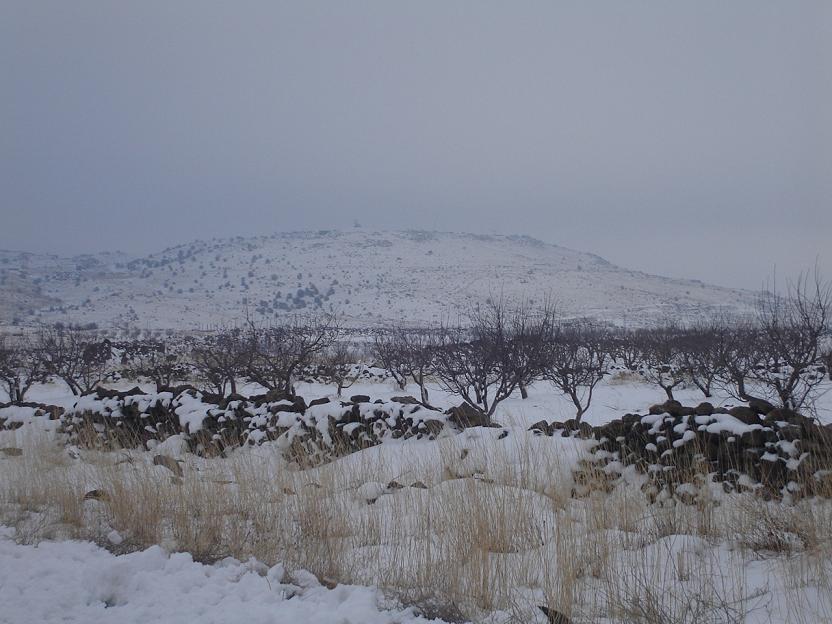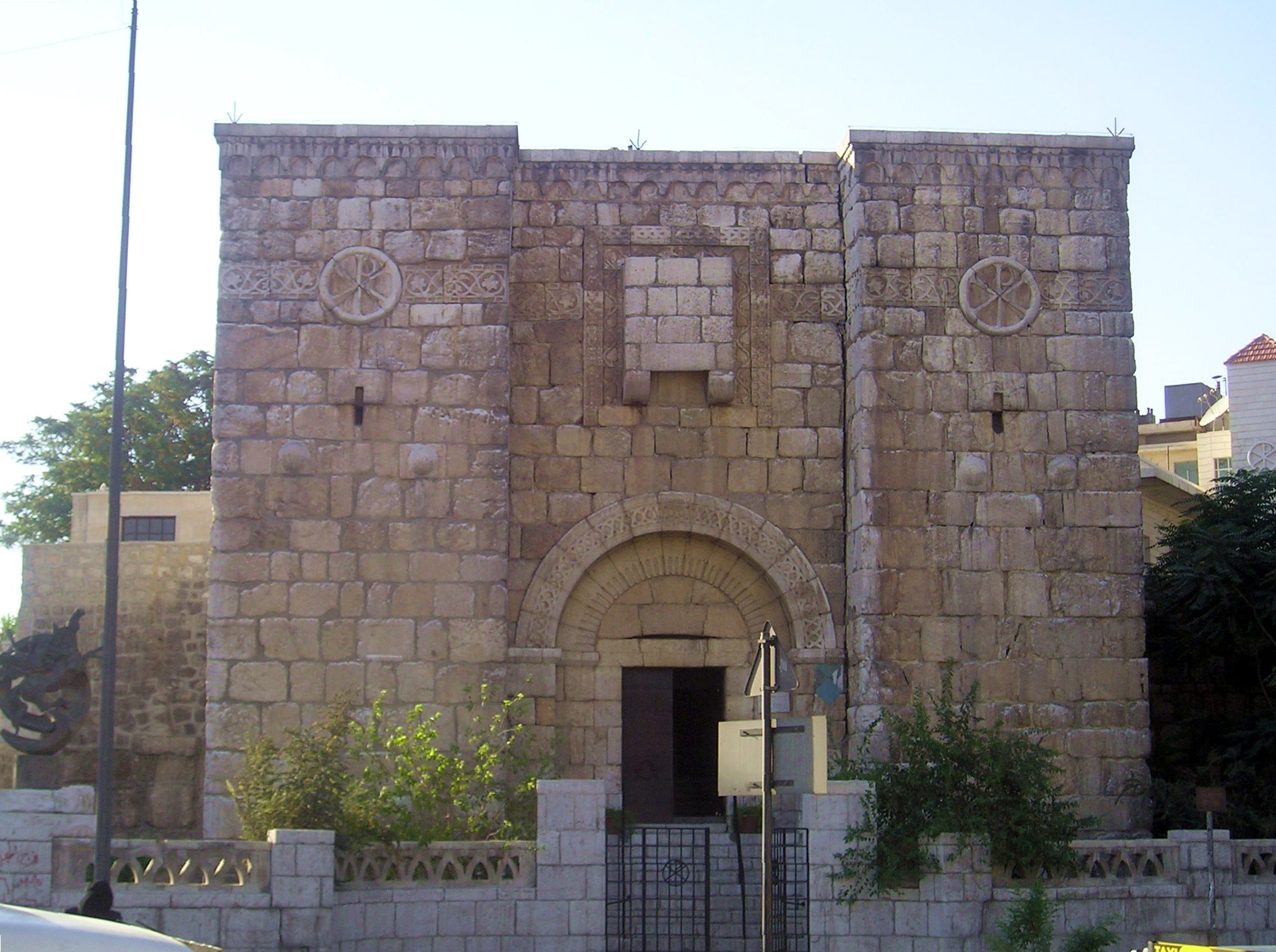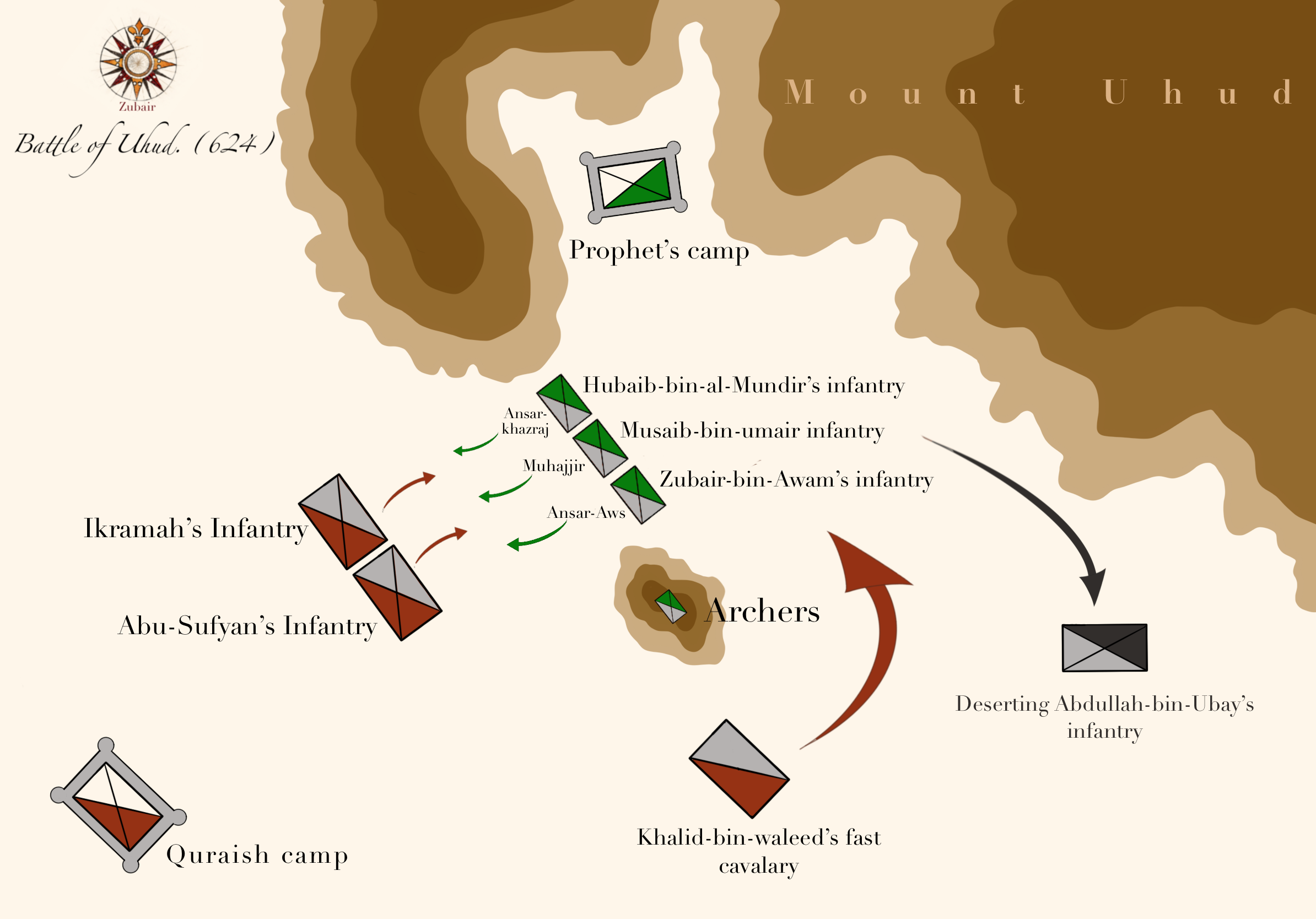|
Shihab Family
The Shihab dynasty (alternatively spelled Chehab; , ALA-LC: ''al-Shihābiyūn'') is an Arab family whose members served as the paramount tax farmers and emirs of Mount Lebanon from the early 18th to mid-19th century, during Ottoman rule (1517–1918). Before then, the family had been in control of the Wadi al-Taym region, purportedly as early as the 12th century. During early Ottoman rule, they maintained an alliance and marital ties with the Ma'n dynasty, the Chouf-based, paramount Druze emirs and tax farmers of Mount Lebanon. When the last Ma'nid emir died without male progeny in 1697, the chiefs of the Druze in Mount Lebanon appointed the Shihab emir, Bashir, whose mother belonged to the Ma'n, as his successor. Bashir was succeeded by another Shihab emir with a Ma'nid mother, Haydar, after his death. Under Haydar, the Shihabs crushed their main rivals for paramountcy amongst the Druze at the Battle of Ain Dara in 1711, consolidating their dominance of Mount Lebanon throu ... [...More Info...] [...Related Items...] OR: [Wikipedia] [Google] [Baidu] |
Mount Lebanon Emirate
The Emirate of Mount Lebanon () was a part of Mount Lebanon that enjoyed variable degrees of partial autonomy under the stable suzerainty of the Ottoman Empire between the mid-16th and the early-19th century. The town of Baakleen was the seat of local power during the Ma'an period until Fakhr-al-Din II chose to live in Deir el Qamar due to a water scarcity, water shortage in Baakleen. Deir el Qamar remained the seat until Bashir Shihab II ascended to the throne and moved its court to the Beiteddine palace. Beiteddine remains the capital of the Chouf District today. Fakhr-al-Din II, the most prominent Druze in Lebanon, Druze tribal leader at the end of the 16th century, was given leeway by the Ottoman Empire, Ottomans to subdue other provincial leaderships in Ottoman Syria on their behalf, and was himself subdued in the end, to make way for a firmer control by the Ottoman central administration over the Ottoman Syria, Syrian eyalets. In Lebanese nationalist narratives, he is celeb ... [...More Info...] [...Related Items...] OR: [Wikipedia] [Google] [Baidu] |
Arab
Arabs (, , ; , , ) are an ethnic group mainly inhabiting the Arab world in West Asia and North Africa. A significant Arab diaspora is present in various parts of the world. Arabs have been in the Fertile Crescent for thousands of years. In the 9th century BCE, the Assyrians made written references to Arabs as inhabitants of the Levant, Mesopotamia, and Arabia. Throughout the Ancient Near East, Arabs established influential civilizations starting from 3000 BCE onwards, such as Dilmun, Gerrha, and Magan (civilization), Magan, playing a vital role in trade between Mesopotamia, and the History of the Mediterranean region, Mediterranean. Other prominent tribes include Midian, ʿĀd, and Thamud mentioned in the Hebrew Bible, Bible and Quran. Later, in 900 BCE, the Qedarites enjoyed close relations with the nearby Canaan#Canaanites, Canaanite and Aramaeans, Aramaean states, and their territory extended from Lower Egypt to the Southern Levant. From 1200 BCE to 110 BCE, powerful ... [...More Info...] [...Related Items...] OR: [Wikipedia] [Google] [Baidu] |
Mount Hermon
Mount Hermon ( / ALA-LC: ('Mountain of the Sheikh', ), , ) is a mountain, mountain cluster constituting the southern end of the Anti-Lebanon mountain range. Its summit straddles the Lebanon–Syria border, border between Syria and Lebanon and, at above sea level, is the highest point in Syria, and the Israeli occupation of the Golan Heights, Israeli-occupied Golan Heights. On the top, in the United Nations Disengagement Observer Force, United Nations buffer zone between Syrian and Israeli-occupied territories, is the highest permanently manned UN position in the world, known as "Hermon Hotel", located at . The southern slopes of Mount Hermon extend to the Israeli-occupied portion of the Golan Heights, where the Mount Hermon ski resort is located with a top elevation of . Geography Wider mountain range The Anti-Lebanon range, of which the Hermon range constitutes the southernmost part, extends for approximately in a northeast–southwest direction, running parallel to the ... [...More Info...] [...Related Items...] OR: [Wikipedia] [Google] [Baidu] |
Jabal Al-Druze
Jabal al-Druze (), is an elevated volcanic region in the Suwayda Governorate of southern Syria. Most of the inhabitants of this region are Druze, and there are also significant Christian communities. Safaitic inscriptions were first found in this area. The State of Jabal Druze was an autonomous area in the French Mandate for Syria and the Lebanon from 1921 to 1936. In the past, the name Jabal al-Druze was used for a different area, located in Mount Lebanon. In Syria, most Druze reside in Suwayda Governorate, which encompasses almost all of Jabal al-Druze. This governorate is unique in Syria as it has a Druze majority. Additionally, it has integrated Christian communities that have long coexisted harmoniously with the Druze in these mountains. In the 1980s Druze made up 87.6% of the population, Christians (mostly Greek Orthodox) 11% and Sunni Muslims 2%. In 2010, the As-Suwayda governorate has a population of about 375,000 inhabitants, Druze made up 90%, Christians 7% a ... [...More Info...] [...Related Items...] OR: [Wikipedia] [Google] [Baidu] |
Shahba
Shahba ( / ALA-LC: ''Shahbā'') is a city located south of Damascus in the Jabal el Druze in As-Suwayda Governorate of Syria, but formerly in the Roman Empire, Roman province of Arabia Petraea. Known in Late Antiquity as Philippopolis (in Arabia), the city was the seat of a Bishopric (see below), which remains a Latin titular see. Its inhabitants are predominantly Druze. History Roman history The oasis settlement now named Shahba had been the native hamlet of the Roman emperor Philip the Arab. After Philip became emperor in 244, he dedicated himself to rebuilding the little community as a ''Colonia (Roman), colonia''. The contemporary community that was replaced with the new construction was so insignificant that one author states that the city can be considered to have been built on virgin soil, making it the last of the Roman cities founded in the East. The city was renamed Philippopolis (a name with homonyms) in dedication to the emperor, who is said to have wanted to t ... [...More Info...] [...Related Items...] OR: [Wikipedia] [Google] [Baidu] |
Hauran
The Hauran (; also spelled ''Hawran'' or ''Houran'') is a region that spans parts of southern Syria and northern Jordan. It is bound in the north by the Ghouta oasis, to the northeast by the al-Safa field, to the east and south by the Harrat al-Sham and to the west by the Golan Heights. Traditionally, the Hauran consists of three subregions: the Nuqrah and Jaydur plains, the Jabal al-Druze massif, and the Lajat volcanic field. The population of the Hauran is largely Arab, but religiously heterogeneous; most inhabitants of the plains are Sunni Muslims belonging to large agrarian clans, while Druze form the majority in the eponymous Jabal al-Druze and a significant Greek Orthodox and Greek Catholic minority inhabit the western foothills of Jabal al-Druze. The region's largest towns are Daraa, al-Ramtha, and al-Suwayda. From the mid-1st century BC, the region was governed by the Roman Empire's Herodian and Nabatean client kings until it was formally annexed by the empire in ... [...More Info...] [...Related Items...] OR: [Wikipedia] [Google] [Baidu] |
Siege Of Damascus (634)
The siege of Damascus (634) lasted from 21 August to 19 September 634 before the city fell to the Rashidun Caliphate. Damascus was the first major city of the Byzantine Empire, Eastern Roman Empire to fall in the Muslim conquest of Syria. The last of the Roman–Persian Wars ended in 628, after Heraclius concluded a successful campaign against the Persians in Mesopotamia. At the same time, Muhammad united the Arabs under the banner of Islam. After his death in 632, Abu Bakr succeeded him as the first Rashidun Caliph. Suppressing several internal revolts, Abu Bakr sought to expand the empire beyond the confines of the Arabian Peninsula. In April 634, Abu Bakr invaded the Byzantine empire, Byzantine Empire in the Levant and decisively defeated a Byzantine army at the Battle of Ajnadayn. The Muslim armies marched north and laid siege to Damascus. The city was taken after a monophysite bishop informed Khalid ibn al-Walid, the Muslim commander in chief, that it was possible to breach ... [...More Info...] [...Related Items...] OR: [Wikipedia] [Google] [Baidu] |
Damascus
Damascus ( , ; ) is the capital and List of largest cities in the Levant region by population, largest city of Syria. It is the oldest capital in the world and, according to some, the fourth Holiest sites in Islam, holiest city in Islam. Known colloquially in Syria as () and dubbed, poetically, the "City of Jasmine" ( ), Damascus is a major cultural center of the Levant and the Arab world. Situated in southwestern Syria, Damascus is the center of a large metropolitan area. Nestled among the eastern foothills of the Anti-Lebanon mountain range inland from the eastern shore of the Mediterranean on a plateau above sea level, Damascus experiences an arid climate because of the rain shadow effect. The Barada, Barada River flows through Damascus. Damascus is one of the List of oldest continuously inhabited cities, oldest continuously inhabited cities in the world. First settled in the 3rd millennium BC, it was chosen as the capital of the Umayyad Caliphate from 661 to 750. Afte ... [...More Info...] [...Related Items...] OR: [Wikipedia] [Google] [Baidu] |
Bab Sharqi
Bab Sharqi (; "The Eastern Gate"), also known as the Gate of the Sun, is one of the seven ancient city gates of Damascus, Syria. Its modern name comes from its location in the eastern side of the city. The gate also gives its name to the Christian quarter surrounding it. The grand facade of the gate was reconstructed in the 1960s. In addition to being the only original Roman gate still standing, Bab Sharqi is also the only gate of the eight gates of the Ancient City of Damascus to preserve its original form as a triple passageway, with the large central passageway for caravans and wheel traffic and the two smaller ones flanking the large one for pedestrians. History The gate, which was dedicated to the sun by the Romans and known to them as the Gate of The Sun, dates back to ca. 200 AD. Although the gate had little defensive structures in the Roman period, it was most likely flanked by towers from both sides. Its architecture was minimal with the only adoration being the tall ... [...More Info...] [...Related Items...] OR: [Wikipedia] [Google] [Baidu] |
Khalid Ibn Al-Walid
Khalid ibn al-Walid ibn al-Mughira al-Makhzumi (; died 642) was a 7th-century Arabs, Arab military commander. He initially led campaigns against Muhammad on behalf of the Quraysh. He later became a Muslim and spent the remainder of his career serving Muhammad and the first two Rashidun caliphs: Abu Bakr and Umar. Khalid played leading command roles in the Ridda Wars against rebel tribes in Arabia in 632–633, the Muslim conquest of Persia#First invasion of Mesopotamia (633), initial campaigns in Sasanian Iraq in 633–634, and the Muslim conquest of the Levant, conquest of Byzantine Syria in 634–638. As a horseman of the Quraysh's aristocratic Banu Makhzum clan, which ardently opposed Muhammad, Khalid played an instrumental role in defeating Muhammad and his followers during the Battle of Uhud in 625. In 627 or 629, he converted to Islam in the presence of Muhammad, who inducted him as an official military commander among the Muslims and gave him the title of (). During th ... [...More Info...] [...Related Items...] OR: [Wikipedia] [Google] [Baidu] |
Muslim Conquest Of Syria
The Muslim conquest of the Levant (; ), or Arab conquest of Syria, was a 634–638 CE invasion of Byzantine Syria by the Rashidun Caliphate. A part of the wider Arab–Byzantine wars, the Levant was brought under Arab Muslim rule and developed into the provincial region of Bilad al-Sham. Clashes between the Arabs and Byzantines on the southern Levantine borders of the Byzantine Empire had occurred during the lifetime of Muhammad, with the Battle of Muʿtah in 629 CE. However, the actual conquest did not begin until 634, two years after Muhammad's death. It was led by the first two Rashidun caliphs who succeeded Muhammad: Abu Bakr and Umar ibn al-Khattab. During this time, Khalid ibn al-Walid was the most important leader of the Rashidun army. It was the first time since the collapse of the Neo-Babylonian Empire in 539 BCE that the region was ruled again by Semitic-speaking people, after centuries of Persian (Achaemenid Empire), and then Roman-Greek (Macedonian Empire, the ... [...More Info...] [...Related Items...] OR: [Wikipedia] [Google] [Baidu] |
Quraysh
The Quraysh () are an Tribes of Arabia, Arab tribe who controlled Mecca before the rise of Islam. Their members were divided into ten main clans, most notably including the Banu Hashim, into which Islam's founding prophet Muhammad was born. By the seventh century, they had become wealthy merchants, dominating trade between the Indian Ocean, East Africa, and the Mediterranean Sea, Mediterranean. The tribe ran caravans to Gaza City, Gaza and Damascus in summer and to Yemen (region), Yemen in winter, while also mining and pursuing other enterprises on these routes. When Muhammad Muhammad's first revelation, began preaching Islam in Mecca, the Quraysh initially showed little concern. However, their opposition to his activities quickly grew as he increasingly challenged Religion in pre-Islamic Arabia, Arab polytheism, which was prevalent throughout pre-Islamic Arabia. As relations deteriorated, Muhammad and Early Muslims, his followers migrated to Medina (the journey known as the Hij ... [...More Info...] [...Related Items...] OR: [Wikipedia] [Google] [Baidu] |









